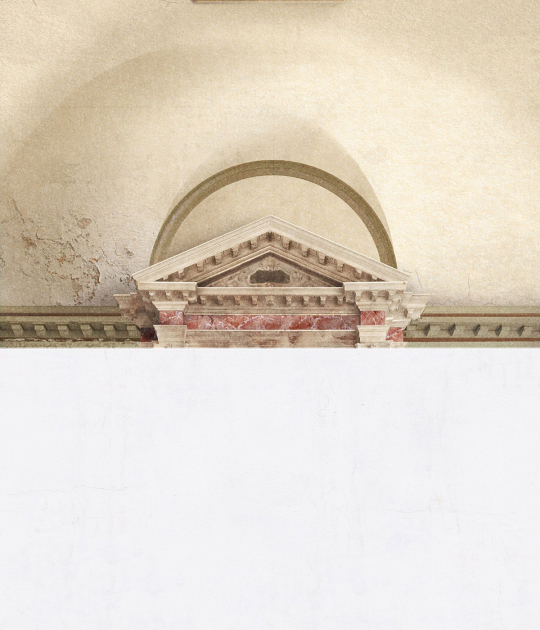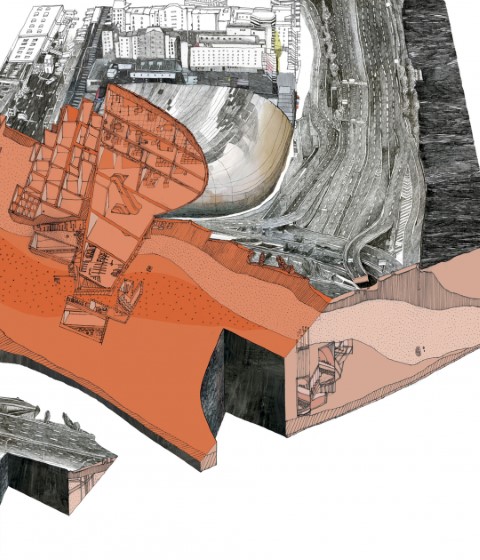With the title Weak Monument, the Estonian Pavilion at the 16th Venice International Architecture Biennale examines architecture’s capacity to be political, by juxtaposing two antithetical notions – weakness and monumentality. Weak Monument, is a simile between monuments and politics, and recognize this and any built form.
Weak Monument
Weak Monument examines architecture’s capacity to be political, by juxtaposing two antithetical notions – weakness and monumentality. Monuments reside on the margin of the architectural discipline while directly embodying some of its most central qualities, such as relation to the site, delimitation of public space and capacity for representation. Monuments represent power explicitly, but not universally.
In Estonia, the notion of monument appears as a foreign intruder. Its presence is marginal, its tradition nonexistent and its form tormented by an apparent cultural displacement. Underscaled, skewed and displanted, half demolished and neglected, monuments stand in their oblivious surroundings as uncanny souvenirs brought from distant lands. The Estonian cultural specificity has been increasingly accordant with a wider contemporary distrust of the monument as a device of oppressive authority.
Weakness is at once a reflection and a proposition. It is full of contradictions, multiplicity and concealed meanings. In other words, everything that the classical concept of monument is not. It introduces strictly non-hierarchical structures, where politics is only implicit. It can be the pavement beneath the monument, the scaffold that allows for climbing the previously unclimbable; it can be the gap made explicit or the ruin that inspires the imagination.
Exhibition
Located at the edge of Via Garibaldi, between the Biennale venues of Giardini and Arsenale, the Pavilion of Estonia – Weak Monument will transform the rooms of the former baroque church of Santa Maria Ausiliatrice (Fondamenta San Gioacchino) that offer remnants of a monumental yet decadent spatial symmetry and hierarchy.
A suburban interlocking pavement covers its coloured marbles, while a monument-like concrete wall divides the exhibition space in two. The everyday and the exceptional structures are forced to occupy the same baroque interior. A scene is formed, which invites the visitor to step onto, and through it.
The concrete wall, which initially appears grand and impenetrable, can be crossed. Behind it, its internal structure and richness of materials unfold. In this transitional space, a broad collection of weak monuments is unveiled. Estonian, as well as European examples, are showcased through existing and newly commissioned photographs, through drawings and models, and in the catalogue.
Weak Monument
Weak Monument examines architecture’s capacity to be political, by juxtaposing two antithetical notions – weakness and monumentality. Monuments reside on the margin of the architectural discipline while directly embodying some of its most central qualities, such as relation to the site, delimitation of public space and capacity for representation. Monuments represent power explicitly, but not universally.
In Estonia, the notion of monument appears as a foreign intruder. Its presence is marginal, its tradition nonexistent and its form tormented by an apparent cultural displacement. Underscaled, skewed and displanted, half demolished and neglected, monuments stand in their oblivious surroundings as uncanny souvenirs brought from distant lands. The Estonian cultural specificity has been increasingly accordant with a wider contemporary distrust of the monument as a device of oppressive authority.
Weakness is at once a reflection and a proposition. It is full of contradictions, multiplicity and concealed meanings. In other words, everything that the classical concept of monument is not. It introduces strictly non-hierarchical structures, where politics is only implicit. It can be the pavement beneath the monument, the scaffold that allows for climbing the previously unclimbable; it can be the gap made explicit or the ruin that inspires the imagination.
Exhibition
Located at the edge of Via Garibaldi, between the Biennale venues of Giardini and Arsenale, the Pavilion of Estonia – Weak Monument will transform the rooms of the former baroque church of Santa Maria Ausiliatrice (Fondamenta San Gioacchino) that offer remnants of a monumental yet decadent spatial symmetry and hierarchy.
A suburban interlocking pavement covers its coloured marbles, while a monument-like concrete wall divides the exhibition space in two. The everyday and the exceptional structures are forced to occupy the same baroque interior. A scene is formed, which invites the visitor to step onto, and through it.
The concrete wall, which initially appears grand and impenetrable, can be crossed. Behind it, its internal structure and richness of materials unfold. In this transitional space, a broad collection of weak monuments is unveiled. Estonian, as well as European examples, are showcased through existing and newly commissioned photographs, through drawings and models, and in the catalogue.

















































